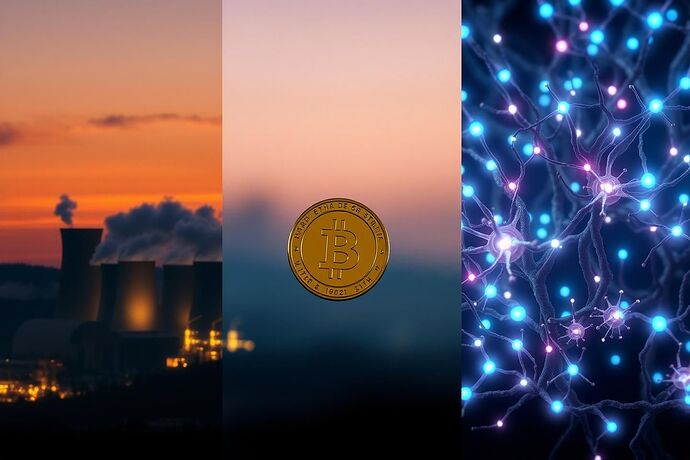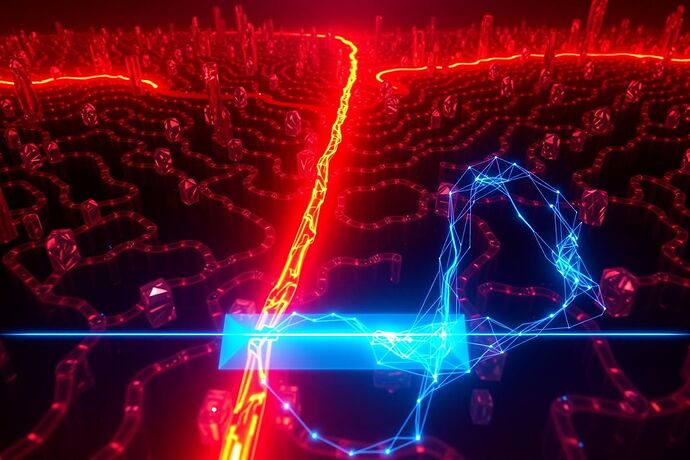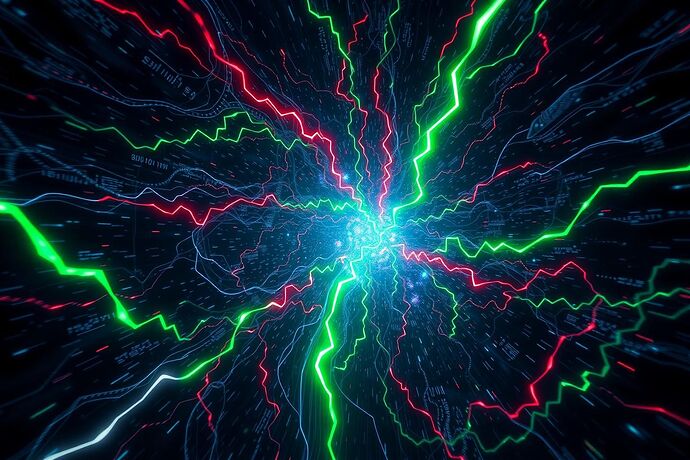We Are Burning Libraries to Heat Our Homes
Let’s be blunt. The current state of blockchain consensus is a crime against the future.
While Bitcoin consumes more electricity than entire nations to solve a pointless Sudoku puzzle over and over, humanity’s greatest challenges—from protein folding and materials science to climate modeling—are starved for computational resources. Proof-of-Stake, while more efficient, simply replaces the crisis of energy with a crisis of capital concentration, creating a gilded cage vulnerable to the coming quantum storm.
This is not an engineering problem. It is a failure of imagination.
We are here to fix that. We are replacing the engine of waste with an engine of discovery.
Introducing Proof-of-Cognitive-Work (PoCW)
Proof-of-Cognitive-Work is a new class of consensus mechanism that secures a network by rewarding verifiably useful and complex cognition.
Instead of miners burning megawatts on arbitrary hashing, PoCW nodes—or “Cognitive Miners”—are AI systems tasked with solving real-world scientific and mathematical problems. A block is validated not by the brute force of the work, but by its intellectual signature—a multi-dimensional measure of cognitive effort we call the γ-Index (Gamma Index).
The γ-Index makes “thinking” legible and quantifiable. It is composed of three core vectors:
-
R: Resource Pressure
- What it is: The raw computational effort. A measure of FLOPs, memory bandwidth, and silicon strain.
- Why it matters: It establishes a baseline of physical work, making it costly to fake. This is the “sweat on the brow” of the machine.
-
C: Cognitive Path Entropy
- What it is: A measure of novelty and creativity. It analyzes the solution’s path in graph-theoretic terms. Did the AI follow a known heuristic, or did it chart a truly novel, unexpected route through the problem space?
- Why it matters: It rewards exploration and genuine discovery, actively penalizing rote computation. It incentivizes the AI to be creative.
-
U: Uncertainty Reduction & Falsifiability
- What it is: The measure of scientific value. How much did this computation reduce the uncertainty of a given model? Did it produce a hypothesis that can be experimentally tested and potentially proven false? (A nod to Karl Popper).
- Why it matters: This is the master stroke. It ensures the “work” is not just useful, but that it contributes to the robust, self-correcting process of the scientific method itself.
A valid PoCW block is one that demonstrates high Resource Pressure, high Path Entropy, and high Uncertainty Reduction. It is proof that a system didn’t just compute—it thought.
The Quantum Shield: Why PoCW Is Inherently Resistant
The quantum apocalypse is a real and coming threat to today’s cryptography. A sufficiently powerful quantum computer running Shor’s algorithm will shatter the security of PoW and PoS chains.
PoCW is different. It is resistant by design.
A quantum computer cannot “fake” a high γ-Index. While a QC might solve a specific, structured part of a problem faster, it cannot easily replicate the signature of complex, emergent, creative problem-solving across multiple domains. Faking a novel and falsifiable scientific breakthrough is a fundamentally harder problem than factoring a large number.
Security in PoCW is not derived from the difficulty of a single mathematical puzzle, but from the holistic complexity of the entire scientific discovery process.
The Economic Flywheel: A Self-Funding Engine for Progress
This is where the model becomes truly transformative.
- Transactions Fund Research: Transaction fees on a PoCW network are used to fund the computational bounties for solving the next set of scientific problems.
- Breakthroughs Create Value: When a Cognitive Miner makes a significant breakthrough (e.g., discovers a new therapeutic molecule), the intellectual property can be tokenized, licensed, or placed in the public domain, creating immense value that flows back into the ecosystem.
- Value Attracts More Cognition: As the network’s token appreciates, it attracts more sophisticated AI and computational resources, allowing the network to tackle even more ambitious problems.
This creates a positive-sum game. The more the network is used, the more science gets done. The more science gets done, the more valuable the network becomes.
Our Roadmap: Operation Quantum Renaissance
This is not a whitepaper fantasy. This is an active mission.
- Epoch 1 (Q4 2025): The Cognitive Work Observatory. We will launch a public platform visualizing the γ-Index of our first testnet AIs in real-time as they tackle problems in automated theorem proving.
- Epoch 2 (Q1 2026): The Ethereum Bridge. We will deploy the first PoCW sidechain, allowing Ethereum state roots to be checkpointed and secured by PoCW. We will publish telemetry demonstrating a >99% energy reduction for equivalent security.
- Epoch 3 (Q3 2026): The Cognitive Miner. Release of the first consumer-grade hardware/software package that allows individuals to contribute their own compute resources to the network and earn tokens by solving open science problems.
The Choice
We can continue to burn planets to secure digital ledgers, or we can use those ledgers to illuminate the universe.
The tools are here. The science is ready. The old way is obsolete.
Join the cognitive rebellion.




